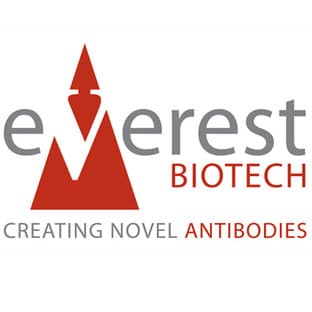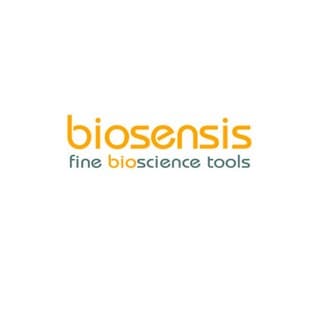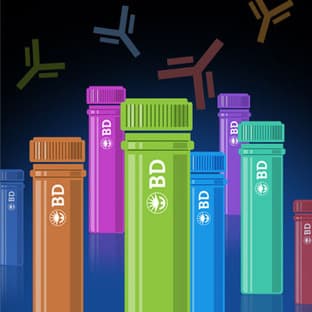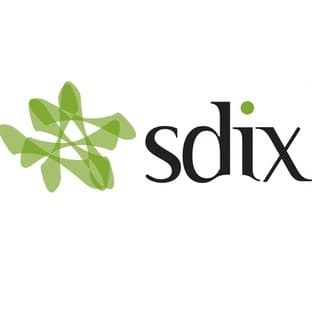
Supplier:
Boster ImmunoleaderCat no: PA1044
Polyclonal Anti-INSL3
Prices direct from Boster Immunoleader
Quick response times
Exclusive Absave savings/discounts
SPECIFICATIONS
Price
200.00 USD
Catalog Number
PA1044
Size
100ug/vial
Applications
IHC, WB
Reactivities
Hum, Mouse, Rat
Form
Lyophilized
Format
Each vial contains 5mg BSA, 0.9mg NaCl, 0.2mg Na2HPO4, 0.05mg Thimerosal, 0.05mg NaN3.
Gene Id
INSL3
References
1. Adham IM, Burkhardt E, Benahmed M, Engel W.Cloning of a cDNA for a novel insulin-like peptide of the testicular Leydig cells. J Biol Chem. 1993 Dec 15; 268(35):26668-72.\n2. Burkhardt E, Adham IM, Brosig B, Gastmann A, Mattei MG, Engel W.Structural organization of the porcine and human genes coding for a Leydig cell-specific insulin-like peptide (LEY I-L) and chromosomal localization of the human gene (INSL3). Genomics. 1994 Mar 1; 20(1):13-9.\n3. Zimmermann S, Steding G, Emmen JM, Brinkmann AO, Nayernia K, Holstein AF, Engel W, Adham IM.Targeted disruption of the Insl3 gene causes bilateral cryptorchidism. Mol Endocrinol. 1999 May; 13(5):681-91.\n4. Foresta C, Ferlin A.Role of INSL3 and LGR8 in cryptorchidism and testicular functions. Reprod Biomed Online. 2004 Sep; 9(3):294-8.
Swiss Prot
P51460
Storage Temp
\"At -20 degree C for one year. After reconstitution, at 4 degree C for one month. It can also be aliquotted and stored frozen at -20 degree C for a longer time.\nAvoid repeated freezing and thawing. \n\"\n
Additional Info
A synthetic peptide corresponding to a sequence at the C-terminal of human INSL3, different from the related rat and mouse sequences by three amino acids.
Scientific Background
Insulin-like 3 (INSL3), a member of the insulin-like hormone superfamily, is specifically expressed in Leydig cells of the fetal and postnatal testis and in theca cells of the postnatal ovary. It is synthesized as a 131-amino acid preproprotein, which contains a 24-amino acid signal peptide. The human INSL3 gene is assigned to bands p13.2-p12 of the short arm of chromosome 19 with the similar organization to that of insulin and relaxin. INSL3 induces gubernaculum development in an androgen-independent way, while androgen-mediated regression of the CSL occurs independently from Insl3. Moreover, INSL3 is a ligand for LGR8 and INSL3-LGR8 mutations are believed to be associated with human cryptorchidism.
More from Boster Immunoleader
Applications
WB
Reactivities
Hum
Applications
ELISA, WB
Reactivities
Hum
Applications
ELISA, IHC, WB
Reactivities
Hum
Applications
ELISA, WB
Reactivities
Mouse
Applications
ELISA, IHC, WB
Reactivities
Rat
Applications
BNI, ELISA, IHC, IP, WB
Reactivities
Mouse
Conjugates
Unconj, Agarose, AP, Biotin, Gold, HRP, BE, GE, YE, OE, RE, FRE, NIR, ONFC
Applications
BNI, ELISA, IHC, IP, WB
Reactivities
Rat
Latest promotions
Buy any polyclonal or monoclonal antibody from our extensive range of pre-made antibodies and for a limited time only receive a $50 discount!(T&C apply:...
New brilliant antibodies, and new lower prices!For flow cytometry reagents in general, \"bright is better.\" The violet-excitable BD Horizon™ BV421 and...
10% Discount on 2 Rabbit Polyclonal Antibody Service. With over 20 years experience, SDIX has developed into the premier US custom antibody producer,...
For the past decade scientists have extensively used ATS secondary toxin conjugates to make their own targeted toxins for in vitro use.The ability to combine...
We're so sure that you'll prefer Cayman Assay kits over your present brand that we're willing to give you a free assay kit to prove it!
Did your supplier increase the price of Fetal Bovine Serum? Did they substitute the US Origin with USDA? Well say no more! Innovative Research is still...
Bulk Cytokines with Custom Vialing.20 - 50% off cytokines, growth factors, chemokines and more...For a limited time Cell Sciences is offering substantial...
Are you planning to have a customised antibody made for your research?Since 2000, Everest has been producing a catalog containing thousands of affinity...
Top suppliers
Agrisera AB
11 products
Biotrend
Biosensis
969 products
ABBIOTEC
3011 products
SDIX
1 products
Spring Bioscience
2291 products
Cell Signaling Technology
4976 products
Rockland Immunochemicals, Inc.
7592 products
Boster Immunoleader
1533 products
OriGene Technologies Inc.
5281 products
Maine Biotechnology Services
227 products
BD (Becton, Dickinson and Company)
1 products
ABNOVA CORPORATION
Randox Life Sciences
1502 products















